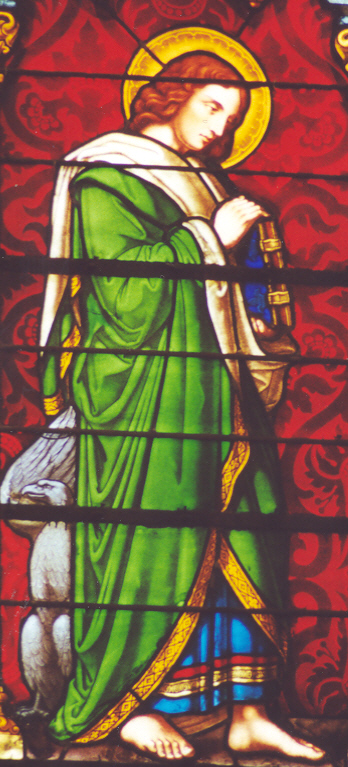
John 20:1-9
Reward of Resurrection by Rev. Jerome A.
Magat
Reprinted with permission of "The Arlington Catholic
Herald"
Home Page
To Sunday Gospel Reflections Index
John wrote to show that Christ was
the Messiah, the Divine Son of God.

On the first day of the week, Mary of Magdala came to the tomb early in the morning, while it was still dark, and saw the stone removed from the tomb. So she ran and went to Simon Peter and to the other disciple whom Jesus loved, and told them, "They have taken the Lord from the tomb, and we don't know where they put him." So Peter and the other disciple went out and came to the tomb. They both ran, but the other disciple ran faster than Peter and arrived at the tomb first; he bent down and saw the burial cloths there, but did not go in. When Simon Peter arrived after him, he went into the tomb and saw the burial cloths there, and the cloth that had covered his head, not with the burial cloths but rolled up in a separate place. Then the other disciple also went in, the one who had arrived at the tomb first, and he saw and believed. For they did not yet understand the Scripture that he had to rise from the dead.
Every time we celebrate morning Mass on Easter Sunday, we hear the same eyewitness account taken from the Gospel of St. John. One of the most unique features of this account is the painstaking detail John devotes to the status of the burial cloths and the cloth that covered Our Lord's head in the tomb. The Greek version of this account reveals a much more vivid description of the status of the burial cloths in the tomb than our English translation. In Greek, the words used to describe the condition of the burial cloths suggest that the linens were deflated or flattened, not pushed aside as we do with a blanket or comforter when we arise each morning. Instead, the Greek translation suggests that Our Lord passed right through the linens.
We also read that the clothe (in Latin, a "sudarium") that covered Our Lord's head was rolled up in a separate place. A sudarium was used to cover the head of the deceased and was tied with a knot at the top. When Our Lord's body arrived at the tomb for burial having been transported from Calvary, the sudarium was removed and the burial shroud placed over the head. The knot would have given the sudarium a twisted or rolled-up appearance.
The status of both the burial cloths and the sudarium suggests that the resurrection transcends all the laws of nature. This should remind us that the resurrection is not the same phenomenon as what occurred to Lazarus, who was raised from the dead. Unlike the resurrected Christ, who would never die again, Lazarus would surely experience death a second time. Unlike the resurrected Christ who passes through the linen burial cloths, Lazarus would have to be unbound of his bandages.
Thus, the resurrection reveals an entirely new dimension of existence. A resurrected body is a glorified body, capable of passing through walls and doors, not subject to disease or death, and a body that enjoys a certain luminous glow and total perfection. In this single event of the resurrection, Christ's human body and human soul were reunited. And so we believe that at the final judgment cemeteries will be very busy places, because every human body will be reconstituted in a glorified state and rejoined to the soul that once animated it to either enjoy the eternal bliss of heaven or the eternal fires of hell.
While we have evidence of an empty tomb and eyewitnesses, the resurrection is still a matter of faith for it reveals a level of existence well beyond ordinary human comprehension. The gift of faith is needed in order to begin to scratch the surface of what this mystery really means. Some readers of this column may have attended or at least seen the television broadcast of Easter Sunday Mass at St. Peter's Basilica in Rome. The grand basilica serves as testimony to Peter's martyrdom in Rome so many years ago. This martyrdom is a kind of "proof" that the resurrection really happened. After all, it was Peter who accompanied John to the tomb on the eyewitness account of Mary Magdalene. Peter himself saw and conversed with our resurrected Lord. Peter's faith led him to give his life as a martyr because he knew he was assured of the resurrection so long as he remained faithful to the end. May the example of the martyrs and the testimony of the Apostles inspire within us greater faith, hope and love in the Resurrected One, who promises us a new, transcendent and glorified existence, as a reward for our fidelity to Him.
Please consider a tax deductible gift to support this web site.